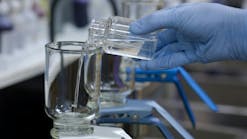SPRINGFIELD, PA, Nov. 20, 2008 -- The Pennsylvania Department of Environmental Protection presented Aqua Pennsylvania with eight awards today for its efforts to provide high quality drinking water as a member of the Partnership for Safe Water, a nationwide program.
"Everyone understands the value of safe drinking water," said Regional Water Supply Manager Nancy Roncetti. "Today, Aqua Pennsylvania has made a commitment to 888,000 customers in four counties to provide the best possible water it can. I'm pleased to recognize Aqua Pennsylvania for its efforts."
Roncetti presented Aqua Pennsylvania with membership certificates for eight water filter plants entering Phase I of the Partnership for Safe Water, a national voluntary effort that encourages public water systems to survey their facilities, treatment processes, operations and management practices.
"Aqua Pennsylvania's commitment of eight facilities to the program secures Pennsylvania's place as the national leader in the Partnership for Safe Water," said Roncetti.
The Partnership for Safe Water consists of DEP, the U.S. Environmental Protection Agency, the American Water Works Association and other drinking water organizations. Of the 406 facilities participating in the program nationwide, 104 are located in Pennsylvania. The goal of the partnership is to encourage facilities to go beyond regulatory compliance in their continuing efforts to ensure the safest public drinking water possible.
The partnership is set up in four phases and is based on optimizing treatment plant performance and preventing disease-causing organisms from entering public drinking water supplies.
The first phase of the partnership is the initial commitment to join. The second phase involves data collection, analysis and submission. The third phase is a self-assessment and development of a detailed report and action plans to correct problems, while the final phase is an on-site peer review.
###


